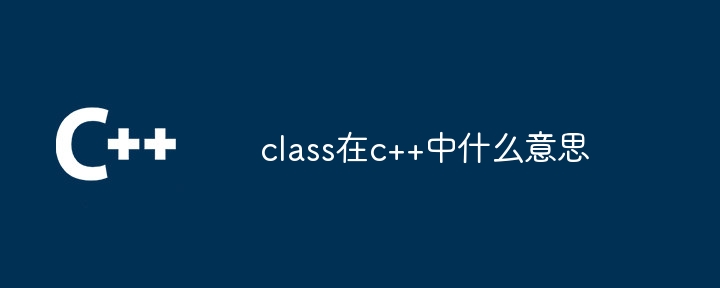Home >Backend Development >C++ >What does class mean in c++
What does class mean in c++
- 下次还敢Original
- 2024-05-08 00:42:20444browse
In C, class represents a user-defined data type (object blueprint), which encapsulates data members and member functions, and defines the properties and behavior of the object. The functions of class include: data encapsulation, object creation, data abstraction and code reuse. The syntax of class: class class_name { public: int data_member; void member_function(); protected: // content private: // content };.

The meaning of class in C
In the C programming language, class is a keyword that represents the user A blueprint for a custom data type or object. It encapsulates data members (variables) and member functions (operations), and defines the properties and behavior of the object.
The role of class:
- #Data encapsulation: class encapsulates data and operations in a single entity, hiding implementation details and improving Code maintainability and reusability.
- Object creation: class is used as a template for object creation. An object created from a class is an instance of a specific type and has its data members and member functions.
- Data abstraction: class allows data to be abstracted, focusing on the object's interface (exposed methods) rather than the implementation.
- Code reuse: class can be inherited, allowing the creation of new classes that have the characteristics and behaviors of the base class.
The syntax of class:
<code class="cpp">class class_name {
public:
// 公共数据成员和成员函数
int data_member;
void member_function();
protected:
// 受保护的数据成员和成员函数
private:
// 私有数据成员和成员函数
};</code>
- class_name: The name of the class
- public : Public access, any code can access.
- protected: Protected access rights, only this class and its derived classes can access.
- private: Private access permissions, only the class itself can access.
The above is the detailed content of What does class mean in c++. For more information, please follow other related articles on the PHP Chinese website!

